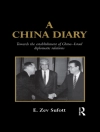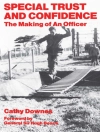‘This is Irish history seen anew, from below, bristling with practical lessons for working-class struggle today’ – Eamonn Mc Cann
The 32 counties of Ireland were divided through imperial terror and gerrymandering. Partition was borne from a Tory strategy to defend the British Empire and has spawned a ‘carnival of reaction’ in Irish politics ever since. Over the last 100 years, conservative forces have dominated both states offering religious identity as a diversion from economic failures and inequality.
Through a sharp analysis of the history of partition, Kieran Allen rejects the view that the ‘two cultures’ of Catholic and Protestant communities lock people into permanent antagonism. Instead, the sectarian states have kept its citizens divided through political and economic measures like austerity, competition for reduced services and low wages.
Overturning conventional narratives, 32 Counties evokes the tradition of James Connolly and calls for an Irish unity movement from below to unite the North and the Republic into a secular, socialist and united Ireland.
Table des matières
Preface
1. ‘A Carnival of Reaction’: The Origins of Partition
2. Republicans and Loyalists
3. British Imperialism
4. Managed Sectarianism
5. Protestant Workers
6. The Return of the National Question
7. The Left and Irish Unity
8. What Kind of United Ireland?
Notes
Index
A propos de l’auteur
Kieran Allen is Senior Lecturer in Sociology at University College Dublin. His books include 1916: Ireland’s Revolutionary Tradition (2016) and The Politics of James Connolly (2016).












